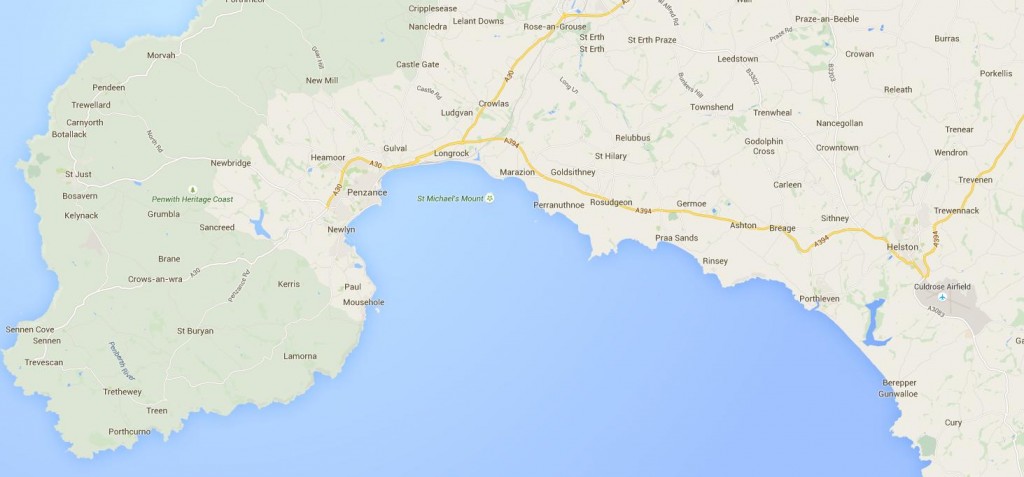Horse God in Early Modern Cornwall! June 24, 2015
Author: Beach Combing | in : Modern , trackbackIn 1595 a Spanish raid on Cornwall in South-western England took place under Captain Carlos de Amezola. Amezola landed his men at Mount’s Bay and burnt several ships, churches and hundreds of houses in Penzance, Newlyn, Paul and Mousehole, some of the most westerly English settlements. This small act of warfare was, of course, absolutely irrelevant save for the poor Cornubians who saw their houses go up in flames, and a tiny minority who lost family members: it also scared London into extra security measures throughout the country. However, there is one curious reference that appears in the report that Amezola wrote back to the Spanish King about the village of Paul:
Here was burned a mosque, in which there was a horse carved in wood and greatly embellished, serving as an idol worshipped by the people.
Now what the hell… Spanish religious sensibilities and Cornish religious sensibilities were rather different in the 1500s, but how is it that there was a mosque in sixteenth-century Cornwall and what about the pagan horse god, not the kind of thing that Muslims normally go in for? The first part of the problem is a relatively easy one. Mosque refers, of course, to a Muslim place of worship but in Spanish (and unfortunately Beach has failed to get the Spanish here, sorry)* mosque came to mean a Godless place of Worship. In the religious wars of the 1500s and 1600s it became quite natural, then, to call a Protestant Church then a mosque. In fact, this building was the church of Paul. We are still left though with the mystery of the pagan horse. What was it?
The best answer is surely that it was a hobby horse: this, in any case, was the suggestion of Robert Dickinson who published an article on the raid of 1595 in 1988 in the Journal of the Royal Institution of Cornwall 10 (1988), 178-186. Hobby horses were mock animals used in many seasonal rituals along with St George, may poles and other objects of village fun. Whether the hobby horse would have been left in the church is a nice question. Jason Semmens (Old Cornwall 13), who has written our best article on the Cornish hobby horse is doubtful as, that we know, hobby horses were not at this date, ‘wood and greatly embellished’ (p. 3). JS writes: ‘It is possible the figure [of the horse] may have been a survival of the original reredos or rood-screen, or some such decoration.’ Possibly. Any other suggestions? drbeachcombing AT yahoo DOT com
Just for the record Paul’s church was annihilated. Carew recorded, a decade afterwards, that even the stone pillars of the church had been hauled down: all the horse’s fault? In defence of the Spaniards it should be noted that at Penzance the Spaniards spared the town’s ‘mosque’ because once long before (i.e. before Henry VIII’s Reformation) mass had been held there. A Spanish Jesuit wrote two lines of, probably very bad doggerel in English explaining why the ‘mosque’ had been left standing so the locals would mend their ways: the Spanish also swore that when England was invaded they would come and built a true church on the spot. They are, it must be said, still waiting…
*Can anyone help?



